Last Updated on August 12, 2014 by Tim
Can the company you work for also be a classroom? Imagine going to work on any given day, and at the same time know, alongside your typical tasks and responsibilities, you will also be learning how to paint. Could be with Adobe Illustrator, or could be with a brush and easel. Or maybe you would be taking in everything there is to know about consumer neuroscience. Brushing up on your second language skills, even. Or maybe you could—finally—find the time to learn how to play the piano.
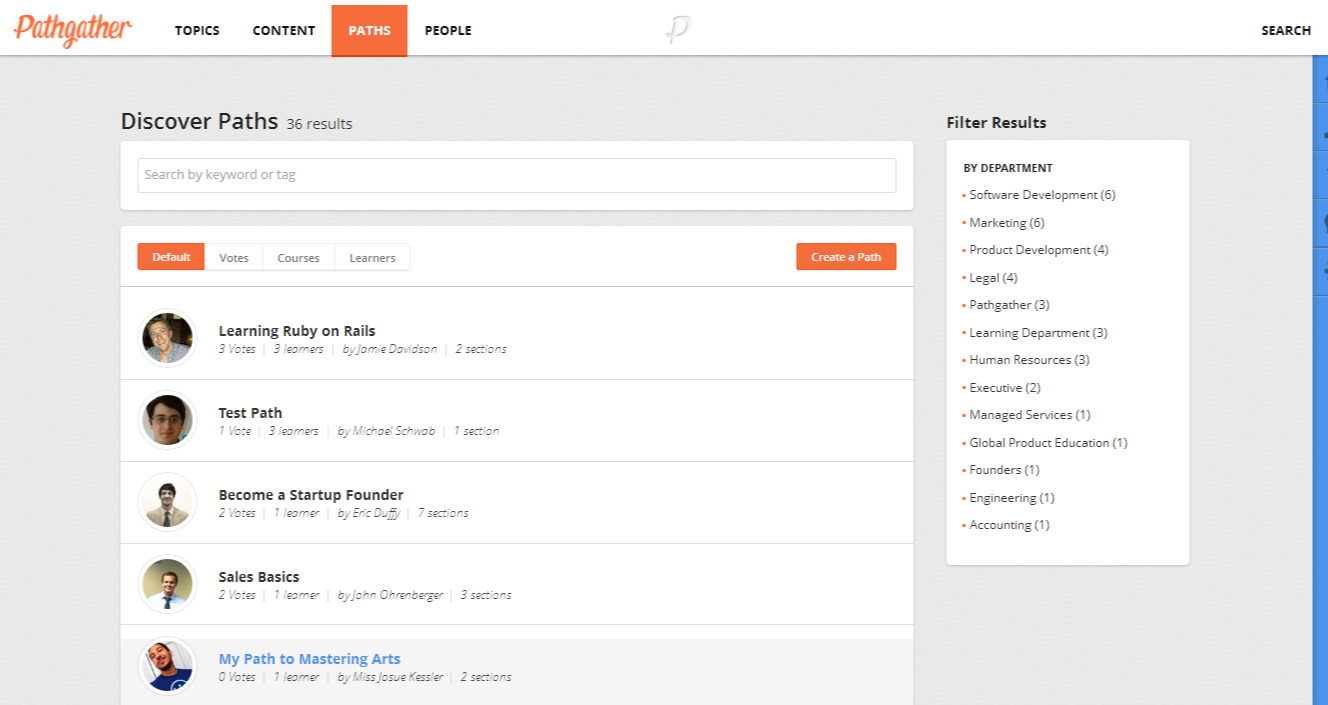
And then, you could share the fruits of your efforts with your co-workers, even recommend to them the same things you are learning. Tell them what was fun and effective, what was not (and of course, they could tell you all about what they were learning as well). Most of all, this kind of learning and development would be encouraged within your company. With Pathgather, you may do all of this and then some.
What is Pathgather?
Pathgather is a Learning Management System (often abbreviated to just LMS), developed for the workplace of today—and tomorrow. With a slogan of “Social Learning for the Modern Enterprise”, Pathgather aims to change up the orthodoxies of learning in the workplace, upgrading the traditional LMS with content upon content, and combining it with social networking features that users would typically expect in applications used outside of work.
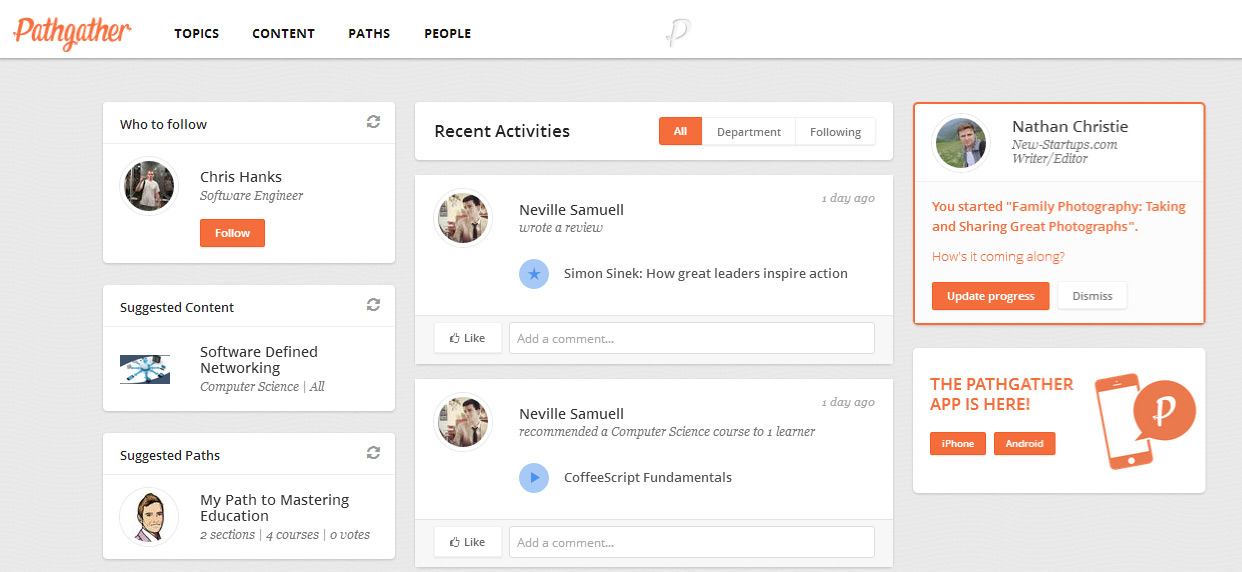
While many companies these days use their own forms of an LMS, often these internally-developed programs are just not intuitive and responsive enough to the employees’ needs. Driven and controlled by the managers, the average LMS gets more out of the employee than the employee gets in return. Maybe an employee will get to have his or her own account, but even then its only use is to ensure that the employee has completed the requisite tasks and checked all the boxes. Having worked for a company before that used an LMS such as this, I can say firsthand how numbing the process is.
The Rundown
We were given a look into Pathgather’s sandbox environment, which, alongside other learners from prospect companies, allows a potential user a full preview of what the application would look like. Here are some of the features you can expect from Pathgather.
To start, the interface works a bit like a social network; the sidebar gives you access to your own profile you can customize yourself, and a homepage that aggregates your recent activities along with other users. Also present on the sidebar is a button for notifications, settings, and the opportunity to create your own ‘path’ (more on that later).
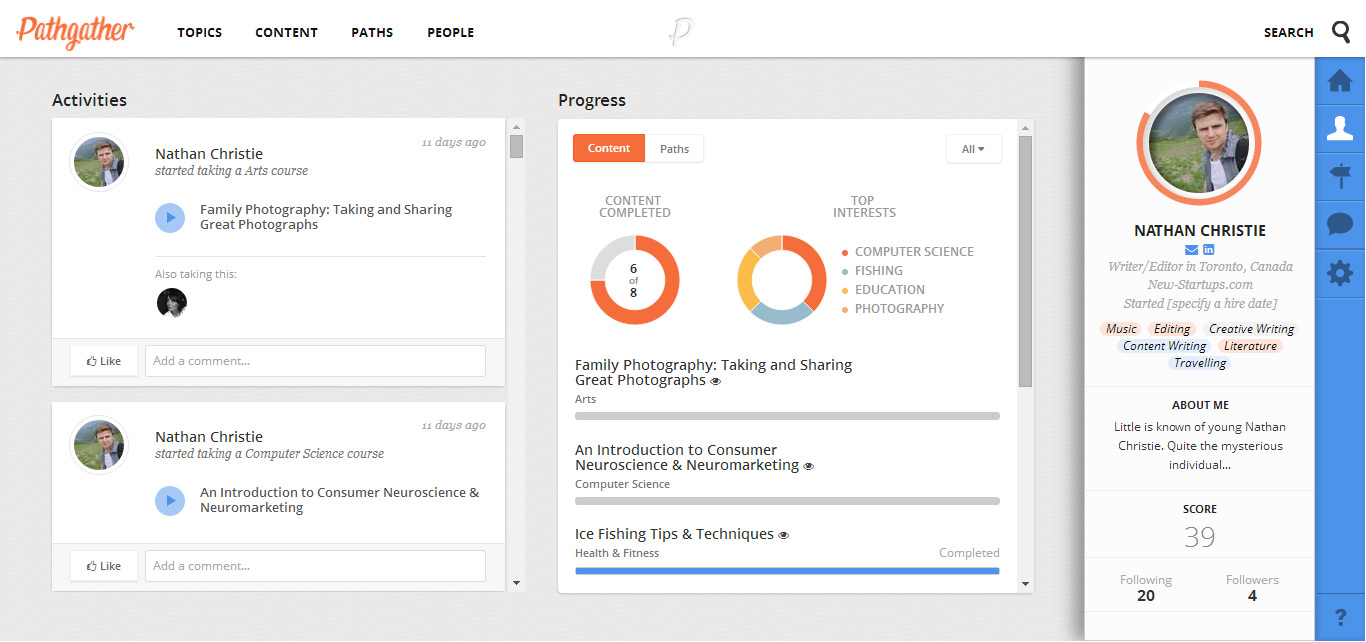
On the top, along with a general search function, there are four tabs: Topics, Content, Paths, and People. Topics will show you all the categories of content you have available, from Business & Management to Languages to Mathematics. Content is similar, but presents itself in a different way, with a straightforward listing of each separate course. Clicking on one will give you a fully detailed rundown of its contents: the overview, syllabus, level of difficulty, and the expected duration for completion. Choosing to start a course will link you directly to the original source, and a user can start his or her learning. Once a user starts a course, Pathgather sends out a notification to others of what you are doing (this option can be turned off), and will also update again once the user finishes. If a user doesn’t want to start right away, he or she can choose to save it for later. There is also a recommend and review option for those satisfied (or not) with the contents.
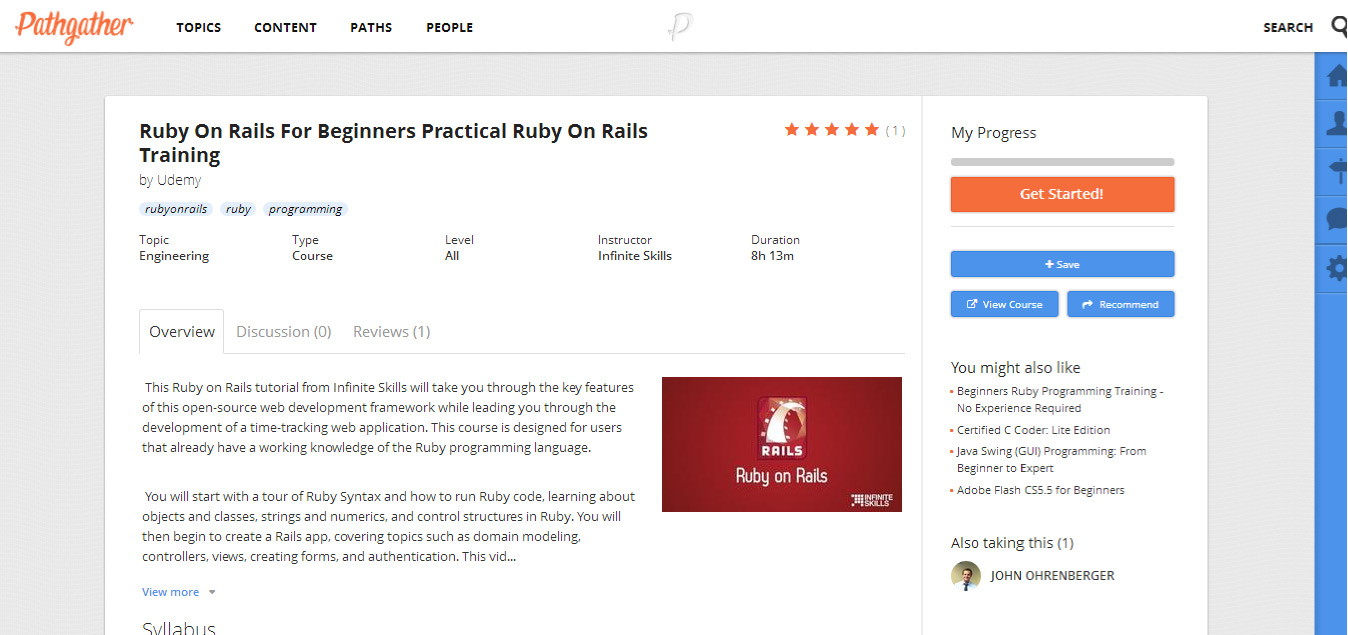
The content itself, while just a small sample, was very diverse. As expected, lectures on building effective businesses and computer science primers were the norm, but there were also plenty of esoteric options to choose from. For example, if you ever wanted to know more about newborn baby care, or perhaps ice fishing, then you now have your chance.
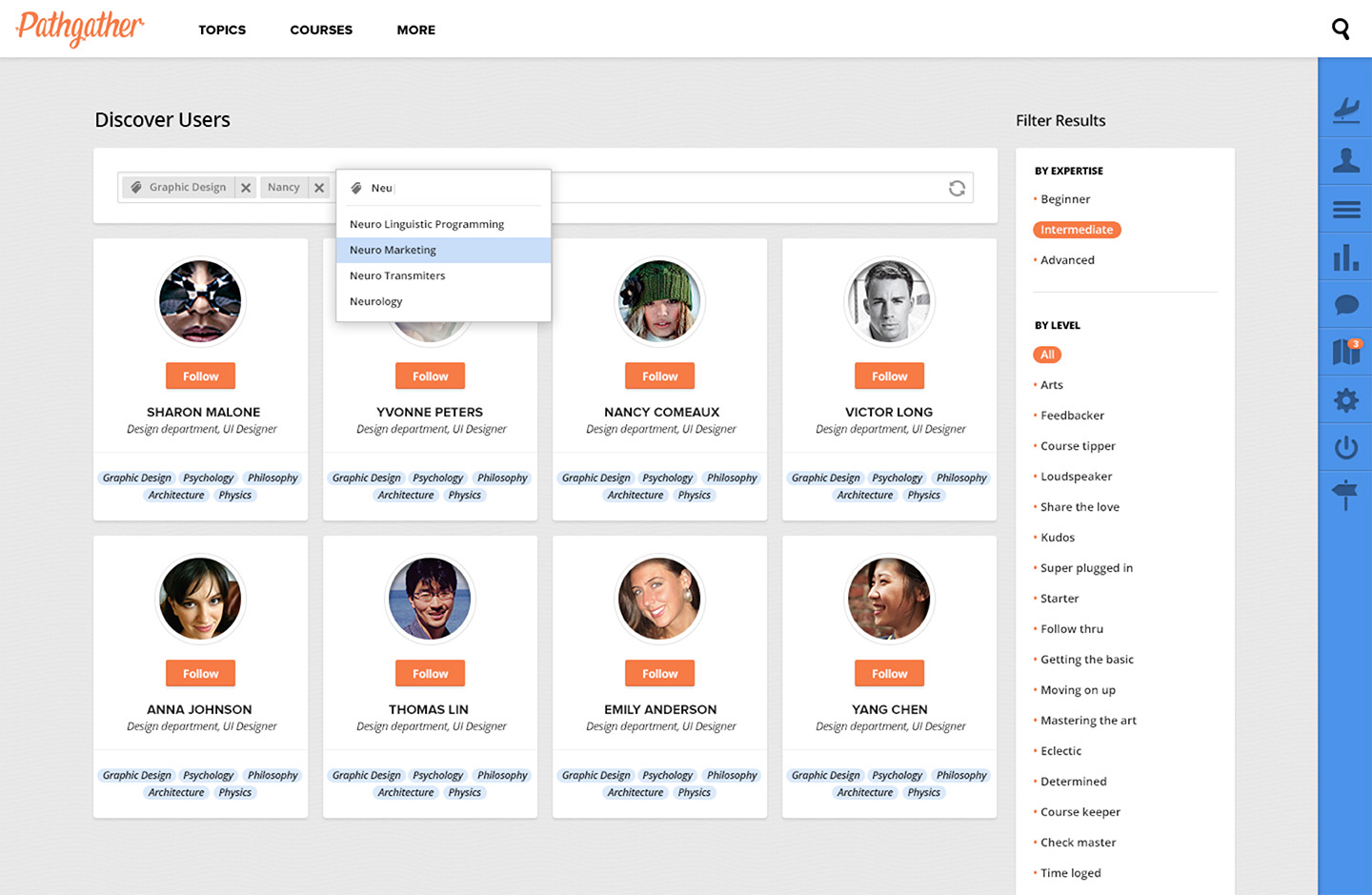
The People tab will show you all the fellow learners using Pathgather. They may be in your company, or they may be in a different organization with the same department or job title as yours. In this way, Pathgather allows for a quick and efficient way for companies to connect and collaborate with each other, by way of collecting people with similar skills and interests. The most intriguing option, however, is Paths.
Choose Your Own Adventure
The path system is perhaps Pathgather’s defining feature. Using the content already provided in the LMS, a path is a collection of courses specifically tailored to master one set of skills or topics. For example, a path titled “Mastering Education” will show the user one way to become an effective teacher or trainer with modern-day technology. From a rundown of useful apps for educators, to how-to guides for effective presentations, a path is intended as a step-by-step tool that will take longer to complete, but more rewarding and comprehensive.
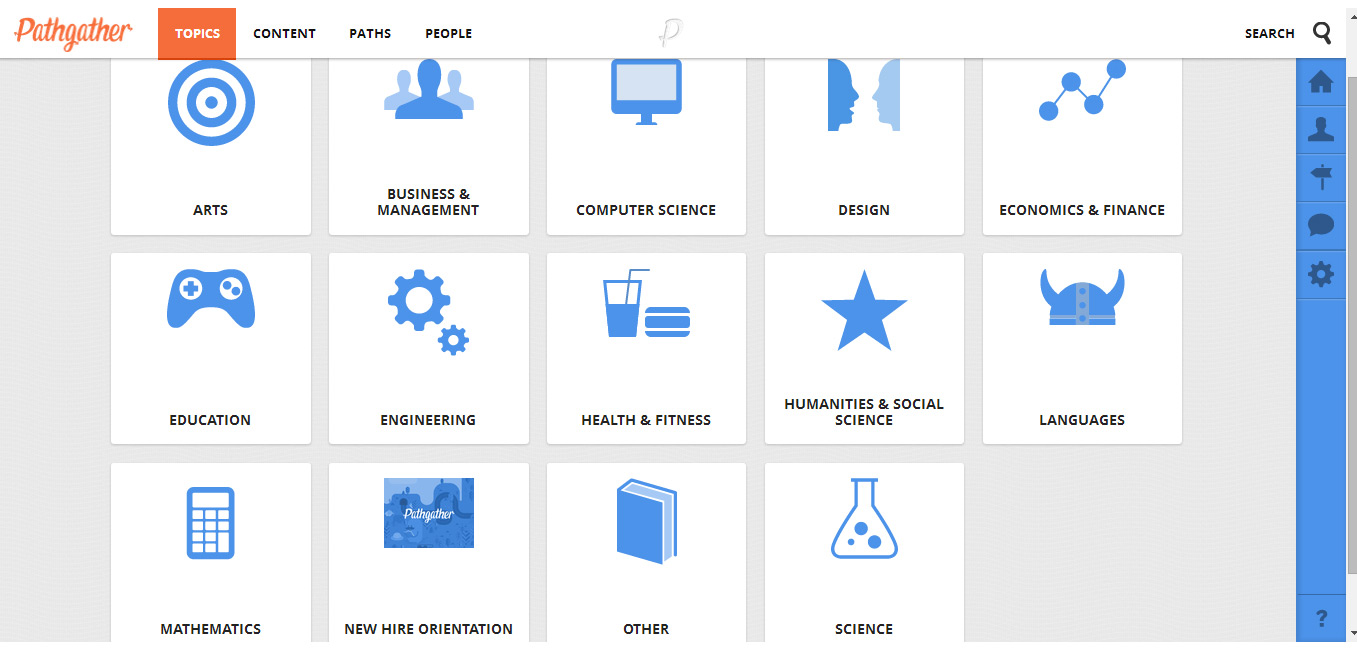
You can also search for content and paths in a variety of ways, whether by keyword, tag, rating, level of difficulty, and the number of learners (popularity, essentially). Also, based on your history, Pathgather will suggest new people, content and paths for you to take. If you dabbled in the topic of health & fitness, for example, you may soon be recommended an introduction to yoga.
Like Twitter, you have the ability to follow other users and be updated in real-time of their progress. Like Facebook, you can like and comment on specific content. Like LinkedIn, you can make business connections via the web. Like Google, you can review content on a five-star basis and give your own thoughts. Like Reddit, you can cast upvotes to promote paths that you like (but only for paths). Like many gaming services, you can earn points for your actions including the completion of content and paths (Pathgather intends to improve upon these ‘gamification’ feature in the coming months, with ways for users to compare their progress with each other in a competitive but fun way).
Collaboration and Access
So then, how exactly will an office be transformed into a better one using Pathgather, if at all? According to Pathgather’s director of business development, John Ohrenberger, the changes Pathgather brings mostly comes down to two aspects: collaboration and access.
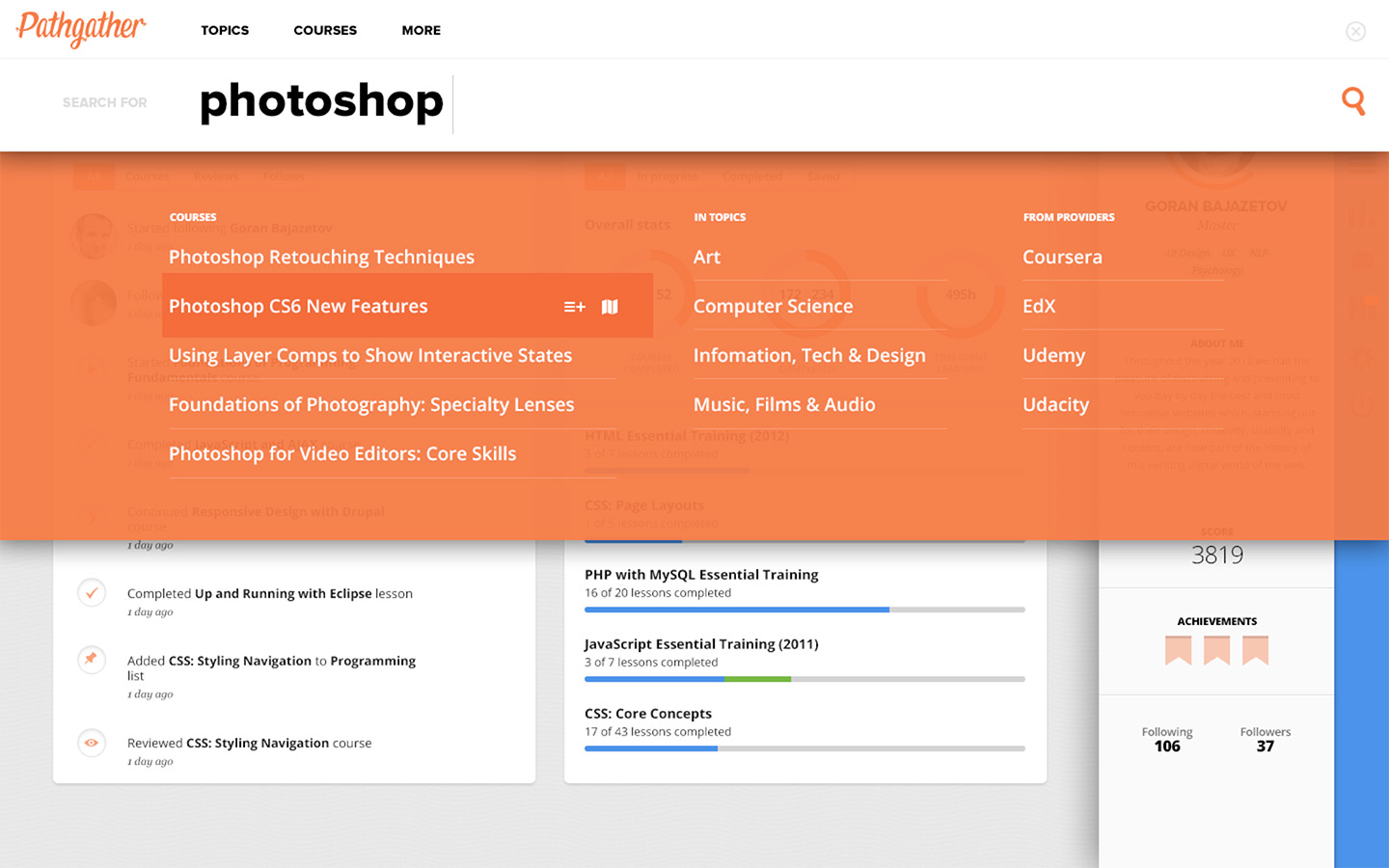
For collaboration, it is simply a return to normal human behaviour in a new context. “What we want is to speak with a new generation of learners.” Ohrenberger explains, “We have found that people learn in certain ways. People learn in classrooms, and they learn socially.” Up to now, the workplace has not been the traditional centre for continuous education. Ohrenberger seeks to change that. “Pathgather is designed for a collaborative environment. Learning in the workplace has become a solo activity. But people have learned in a social setting. With Pathgather, if I want to learn about Photoshop, I can design or connect with something or someone who knows.”
Enabling access is also key to unlocking the potential of a workforce. Content provided in traditional LMSs may be internal or built-out, but either way the content is closed and unchanging. With Pathgather, people can create their own courses and own paths: unique learning systems for each employee. Ohrenberger states, “Employees want to invest and improve, and help others around the web.” With access, employees will find new avenues to explore. With collaboration, employees will find a way to use these avenues as a benefit for everyone.
A New Realization, A New Beginning
Which makes the story of Pathgather’s genesis rather fitting. After finishing university, future Pathgather co-founder and CEO Eric Duffy undertook an educational fellowship, one that took him places around the world. One of the places he landed in was a small, remote village in South Africa, where his task was to install a water cistern. The village, which had a population of no more than 2000, had very few amenities and only received electricity six years ago. It had almost nothing. Almost…except for something that every villager had equal and open access to. The Internet.
In contradiction of their rural surroundings, the majority of villagers had the exact same connection to the global network as you, me, or the President of the United States. Like you or me, they had the ability to access whatever information they may need—especially, in this case, a how-to guide in installing water cisterns.
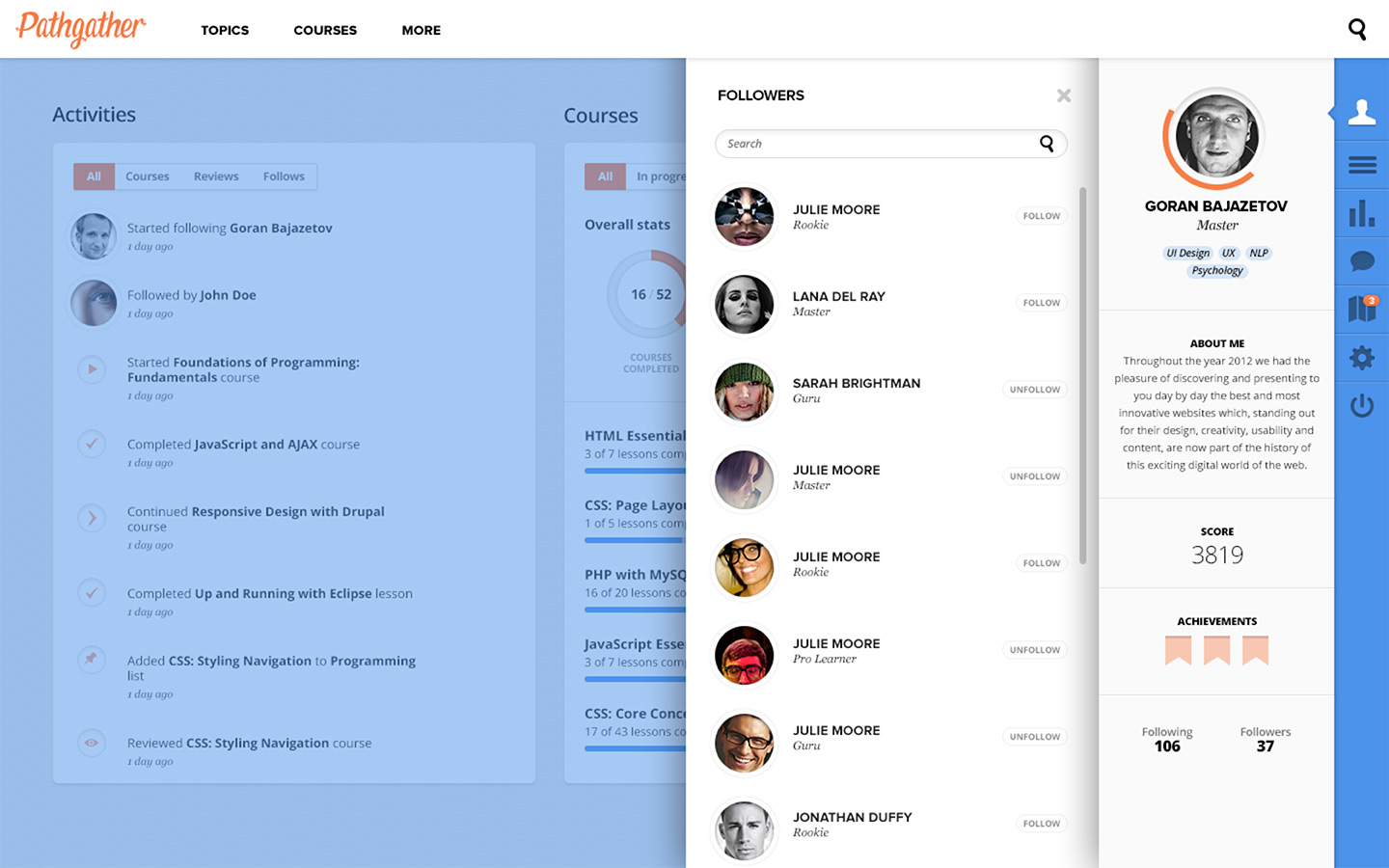
Duffy was amazed. If even people out here can access the internet, then they can access the knowledge. Today, a user can visit an open, educational website like The Khan Academy and learn all about microeconomics, or visit Code School and write their the first line of code. But with the masses of content available, the Internet can appear no more than an overloaded, overwhelming mess. Duffy realized that there needed to be an organizing principle—one that could guide users and show them the way to become experts in a given learning field. And with the nature of education as it is (everyone learns a little differently, after all), just having one provider would not be enough. There needed to be an effective platform to fit it all in.
So, in early 2013, Pathgather was born. Duffy co-founded the company with Jamie Davidson, the company’s present CTO. Despite its massive growth over the past year and a half, Pathgather maintains only a team of five at its Broadway office in New York City. A small company, sure, but one whose growth has been carefully managed so far. As of now, Pathgather remains specialized for company purposes, and relies on the business-to-business market and good word-of-mouth to get its product across. The latter is especially important, as Ohrenberger notes, “We take our customer feedback very seriously.”
Small Company, Big Service
As it should be, especially when your application uses social interaction as its crux. When your company is small enough to fit into a sedan, it becomes essential that each employee is effective in not only their given position, but also being a moderator, cheerleader, administrator and customer representative. Fortunately, this seems to be something that Pathgather understands. To join, you must contact them—your name, email, and the company you represent—and then wait for a response.
Delightedly, the responses come quick and the understanding is generous, as what is essentially a two-way interview occurs: you discuss your company and its needs, and Pathgather figures out how to tailor themselves to you. In this way Pathgather demonstrates their flexibility, a crucial quality which the lack of has damned many a potential startup into the dustbins of dot-com.
Flexible, Not Rigid
Flexibility, as Ohrenberger explains, is one of the keys to a successful future for both Pathgather and its clients. It may come inherently in an employee-driven LMS versus a manager-controlled one, but that won’t excuse stativity as the average workplace continues to morph in the digital age. To differentiate itself from the pack, Pathgather offers what Ohrenberger calls, “the democratization of learning content.” The content that appears on Pathgather may come from anywhere. While online educational platforms such as The Khan Academy and Udemy are certainly popular providers, you may also find content from smaller, more specialized instructors, or it could even simply be a video uploaded to Youtube. The content relies on the crowdsourcing abilities of its users, and the openness of Pathgather gives that crowd a town square in which to come together.
Another point for Pathgather’s flexibility is its usage of open API, enabling it to interact with other applications. For companies looking to up integration and cut down redundancy, this comes as a definite plus. Pathgather’s social networking features (e.g. user-constructed profiles, likes, and a voting system) could have it being used as an office’s sole application for enterprise collaboration; alternatively a company may choose to integrate it with others like Yammer and SharePoint. Users can also import their LinkedIn profile from the first time they sign in.
As well, with the breadth of the LMS and the potential content available, Pathgather may seem like it is suited only for those companies big enough to necessitate multiple departments. While their platform has indeed attracted interest from Fortune 500 companies, Pathgather has also received surprisingly enthusiastic responses from much smaller organizations. For companies such as these, with no organized content repository, no learning infrastructure with which to build out, and no secure method of sharing content beyond Google Drive, the LMS offered up by Pathgather represents a solution to all these problems. Pathgather’s ideal customer is not dependent on size, then, but a certain interest. Ohrenberger states, “We have had an interest from a wide range of companies, which speaks to a market need. People have a need for learning.”
Startup Boot Camp
From March to June of this year, Pathgather undertook the rigorous 13-week mentorship program of TechStars, a company that prides itself as being one of the top startup accelerators in the world. Named as one of the ten hottest incubators for startups by Forbes, to be accepted by TechStars is no easy feat: the company’s stringent application standards has it accepting less than 2% of applicants, amongst of which may be Ivy League MBAs and investment bankers. David Tisch, the co-founder and former Managing Director of TechStars at their New York City location, was known for routinely evaluating applicants in less the time it takes to brush your teeth in the morning (1 minute and 30 seconds is the average time of consideration a company may receive). If Tisch didn’t think highly of your startup within the first 20 seconds, then the only comment provoked from the heart-on-sleeve gatekeeper could be just “Jesus Christ.”
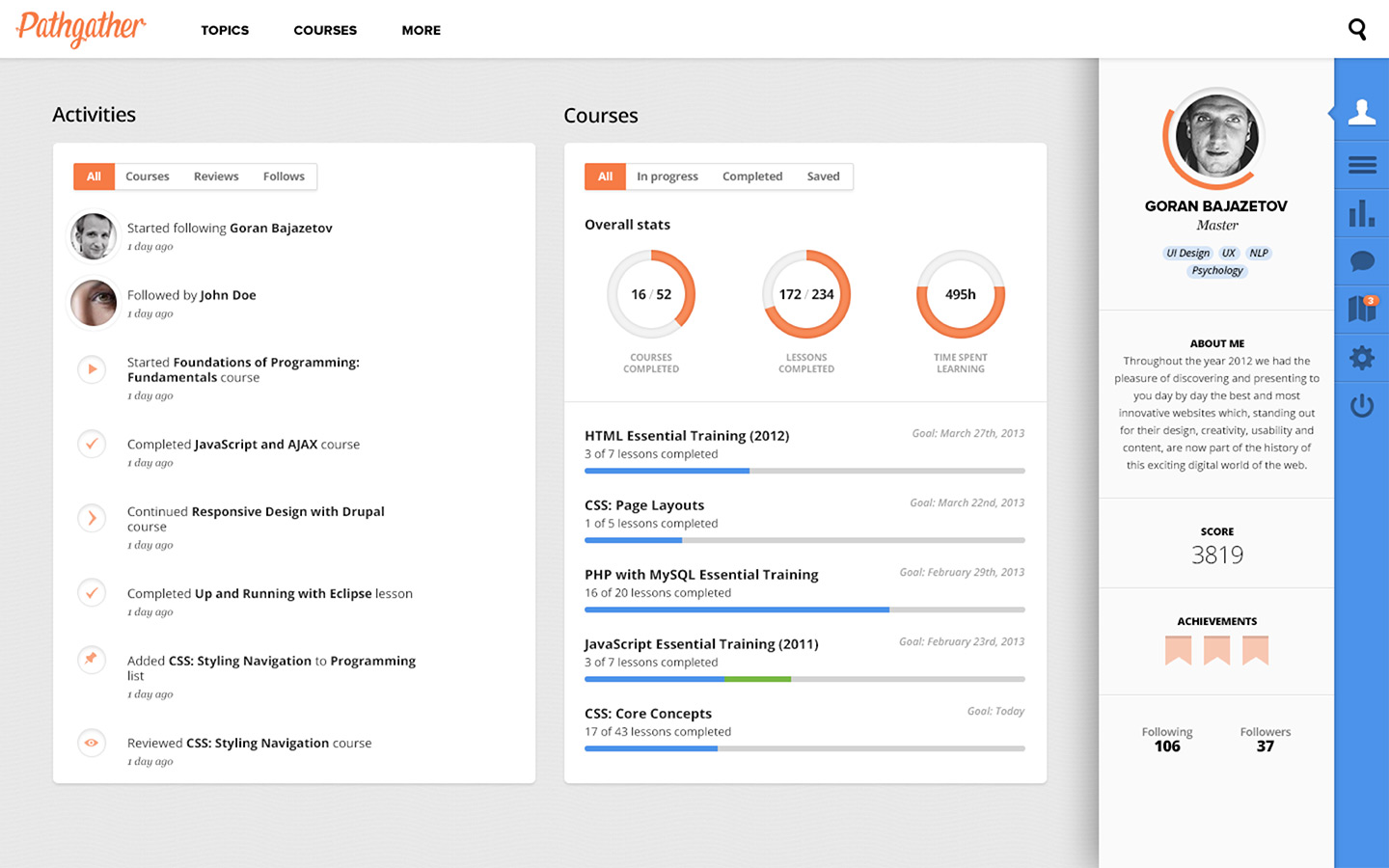
But the rewards of being recognized and nurtured by TechStars makes the strenuous application process worth it. The average startup will receive $1.8 million in funding upon completion, and the resources and connections provided by TechStars will also come in handy. Overall, out of the nearly 400 budding companies that have been taken under TechStars’ wing, more than 75% remain active, Pathgather included. While there was much to take in during the program, one of the most important lessons Duffy and co. learned was the value of building an educational tool that everyone can share and use. As written on Pathgather’s blog, “This experience has redoubled our focus on using Pathgather as a way to establish mentorship networks within every company.” Today, Duffy’s startup is on its way to fulfill its own path.
Blocks in the Path
Though, as a new path is built, rough patches and obstacles will also appear. These will have to be solved and overcome—quickly. Pathgather is still in its infancy, and while minor bugs may still be expected at this stage, larger issues soon becomes apparent after an extended look into its sandbox environment. While the customer service of the employees may be quick, well-thought and responsive, the built-in features of the LMS do not always rack up to the same standard. The introductory tutorial, for one, only encourages the setting up of the user’s profile; a tour of the full platform does not appear and as of now there is no complete tutorial nor help system to assist users in figuring things out. This may be especially needed when a user has to figure out the benefits of taking a single course versus an entire path. Another obstacle may be the unintuitive responses in some of the course syllabuses, where different sections may be listed with individual ‘play’ icons, but will all take you to the same page, if at all.
Individually, these are simple problems that can be tackled compartmentally; collectively, they’re a source of frustration that may end up with the user exclaiming, “What’s the point?” For as any failed startup would tell you, there is nothing worse than your product being played with, considered, and then ultimately tossed like a cat’s toy.
But it is an endpoint that Pathgather is all too aware of. In my discussions with Ohrenberger, he strived to understand each and every detail of my user experience, and made it clear that their feedback was reciprocal. When I brought up some of the aforementioned issues I had in the sandbox environment, Ohrenberger’s response was not, thankfully, something akin to Well, you may just be using it wrong! Instead, he took the time to suss out the usability problems I had, and responded thoughtfully to suggestions.
Trailblazing the Future
This is what makes Pathgather promising as a startup. It is not just their many social network features and archives of content; it is not just their rather cool origin story; it is not just their flexibility to do what you want it to do; it is not just their approval, and then graduation, from one of the most intensive startup accelerators around. It is the promise in knowing that, in a week’s time, Pathgather will be different. Improved. In a months’ time. In a year’s time. In a decade’s time (here’s hoping).
Learning is a flexible thing. As noted in Pathgather’s blog, “The companies that successfully create a culture of continuous learning will be rewarded with a workforce that is better equipped to address the challenges of highly competitive modern markets[7].” For the future of Web 2.0, the companies that are based in it, and the users that thrive on it, the success of startups like Pathgather will be its indicators, and, yes, maybe even the path makers.